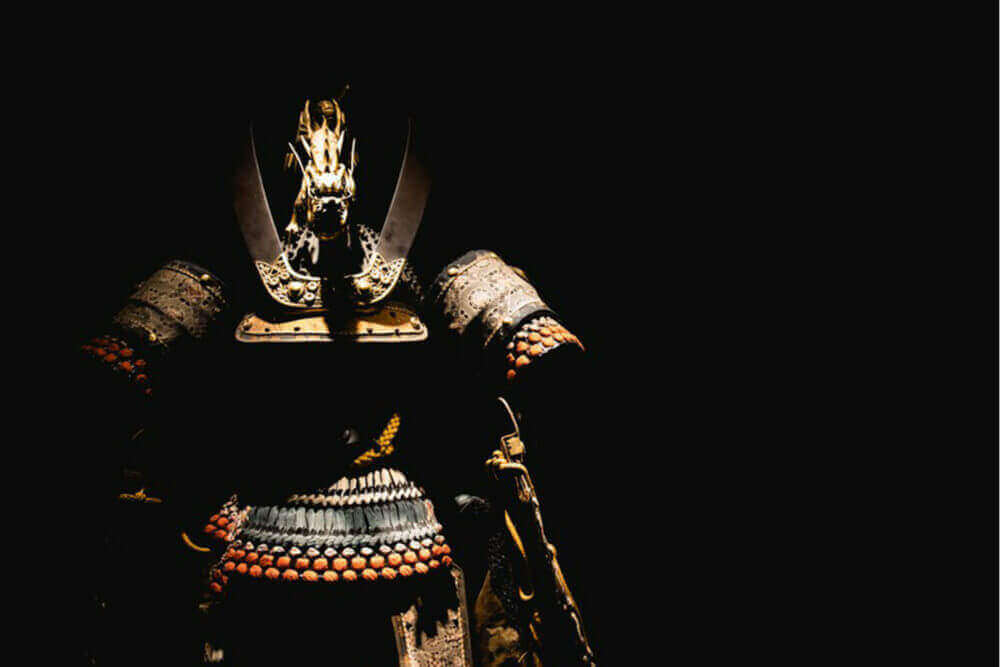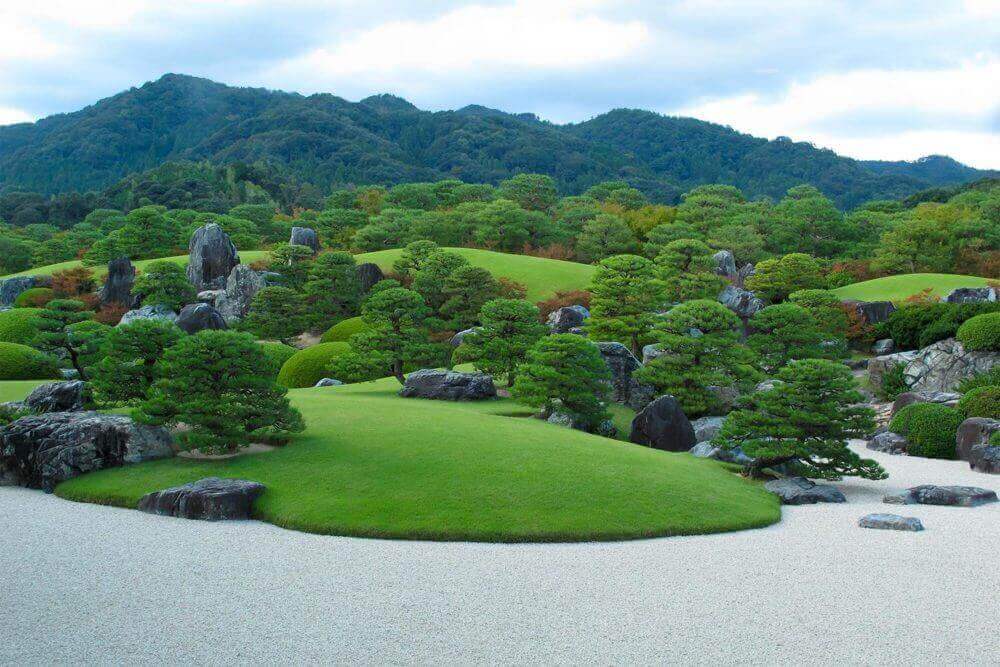There are various types of museums in Japan. There are few fulfilling art museums like the United States, France, England, but Japanese museums are unique in many types. On this page, I will introduce 14 most famous museums I would like to recommend specifically.
Table of Contents
- Edo-Tokyo Museum (Tokyo)
- Tokyo National Museum (Tokyo)
- Samurai Museum (Tokyo)
- Ghibli Museum Mitaka (Tokyo)
- Shinyokohama Ramen Museum (Kanagawa Prefecture)
- Hakone Open-Air Museum (Kanagawa Prefecture)
- Toyota Commemorative Museum of Industry and Technology (Aichi Prefecture)
- 21st Century Museum of Contemporary Art, Kanazawa (Ishikawa Prefecture)
- Ohara Museum of Art (Okayama Prefecture)
- Adachi Museum of Art (Shimane Prefecture)
- Hiroshima Peace Memorial Museum (Hiroshima Prefecture)
- Benesse Art Site Naoshima (Kagawa and Okayama Prefecture)
- Otsuka Museum of Art (Tokushima Prefecture)
- Nagasaki Atomic Bomb Museum (Nagasaki Prefecture)
Edo-Tokyo Museum (Tokyo)
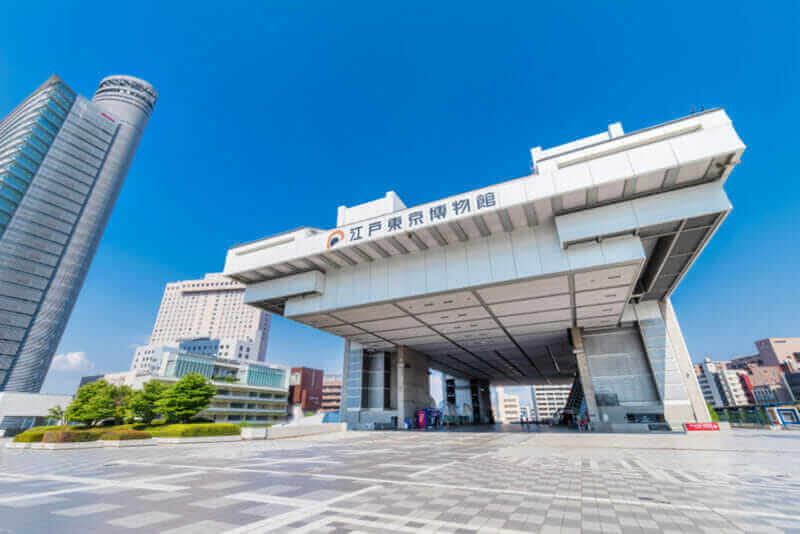
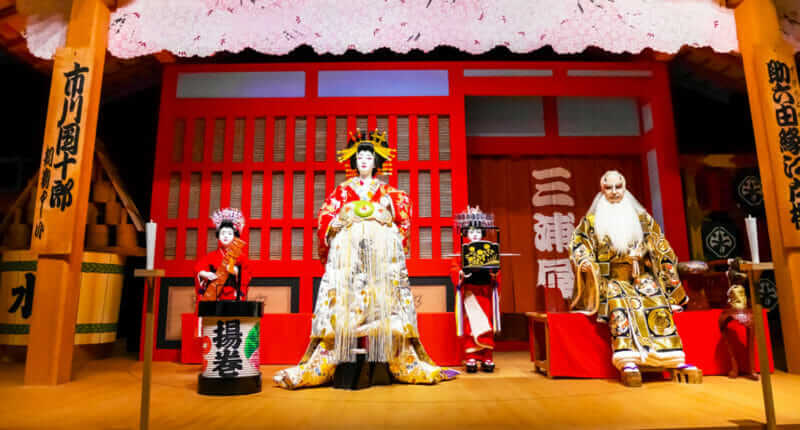
If you want to deepen your understanding of ordinary Japanese people, the museum I recommend the most is the Edo-Tokyo museum. In this museum, you can enjoy concrete exhibitions about ordinary Japanese people’s lives from Edo era (1603-1868) to the present age.
The Edo-Tokyo museum is in front of JR Ryogoku Station in eastern Tokyo. Next to, there is the Kokugikan which is the venue of Grand Sumo wrestling, and if you are lucky you may see sumo wrestlers.
This museum is a seven-storey reinforced concrete building whose appearance is very huge and unique, as can be seen in the above picture. As you enter the museum, you will be amazed at the beginning with a huge wooden bridge in front of you. This bridge is a reproduction of “Nihonbashi Bridge” that was in the center of Tokyo during the Edo period. You cross the bridge and enter the world of the Edo period.
Before entering this museum you do not need to prepare about Japanese history. There are many interesting exhibits in this museum, such as a huge model of a huge merchant house in the Edo period. The houses of ordinary people in the Edo era have also been reproduced and exhibited. As you walk all the way, there is also a corner that reproduces Japanese families of decades ago. If you look at these innumerable exhibits, you will probably deepen your understanding of Japan.
The Edo-Tokyo Museum can be enjoyed even by elementary and junior high school students.
For more information and to see the tour program, click here!
>> Edo-Tokyo Museum official website
Tokyo National Museum (Tokyo)
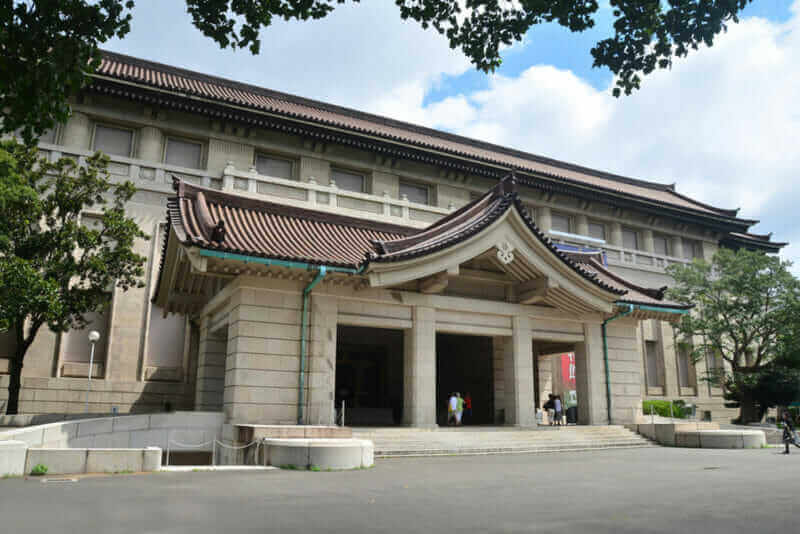
Tokyo National Museum is the largest museum in Japan, located about 10 minutes on foot from JR Ueno Station. There are about 120,000 collections, of which about 80 are national treasures, about 640 are important cultural assets. This museum also has a huge number of deposited items. Approximately 2 million people visit this museum every year.
The Tokyo National Museum consists of several large buildings. The central building seen in the above picture is “Honkan (main building)”. Here, Japanese paintings, sculptures, crafts and writing are displayed. Special exhibitions are often done at Honkan. If you like art or history, you may take more than half a day just to go through this building.
In addition, there are the following buildings in Tokyo National Museum.
Toyokan (Oriental House): In this building, art objects such as China, Korea, Southeast Asia, India and Egypt are on exhibition.
Heiseikan (new building of Heisei): Here, ancient Japanese excavations and the like are exhibited. In Heiseikan, special exhibitions are also frequently held.
The Gallery of Horyuji Treasures: Buddha statues and paintings around the 7th century that Horyuji Temple had, were exhibited. Horyu-ji is a very old temple located in Nara prefecture, and it is registered as a UNESCO World Heritage Site. The statue of Buddha displayed here is the oldest in Japan and very impressive.
All of the exhibits at the Tokyo National Museum are first-class items that represent Japan. As there are so many exhibits, if you do not have much time to spare, you may want to focus on what you see.
Ueno Park in Tokyo with the Tokyo National Museum has so many wonderful museums. For example, National Museum of Western Art, National Museum of Nature and Science, Tokyo Metropolitan Art Museum.
For more information and to see the tour program, click here!
>> Tokyo National Museum official website
Samurai Museum (Tokyo)
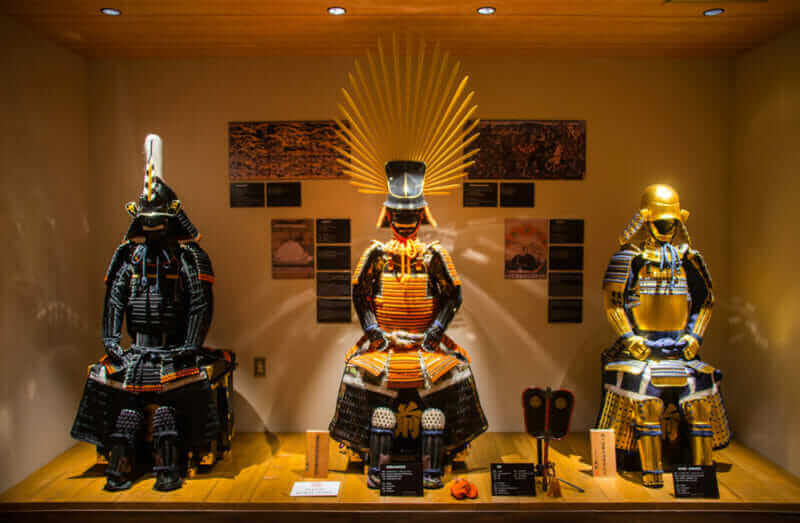
Samurai Museum is a small museum recently built in the downtown area in Shinjuku, Tokyo. Samurai Museum has a fairly different concept from ordinary museums. This museum has not only exhibition corners, but also corners where visitors can wear Samurai’s helmet and armor to take pictures. In this museum, performance using Japanese sword is also being shown. So this museum is very popular among tourists from abroad.
As for the Samurai Museum, I have already introduced in the following article. If you do not mind, please take a look at the following article.
Ghibli Museum Mitaka (Tokyo)
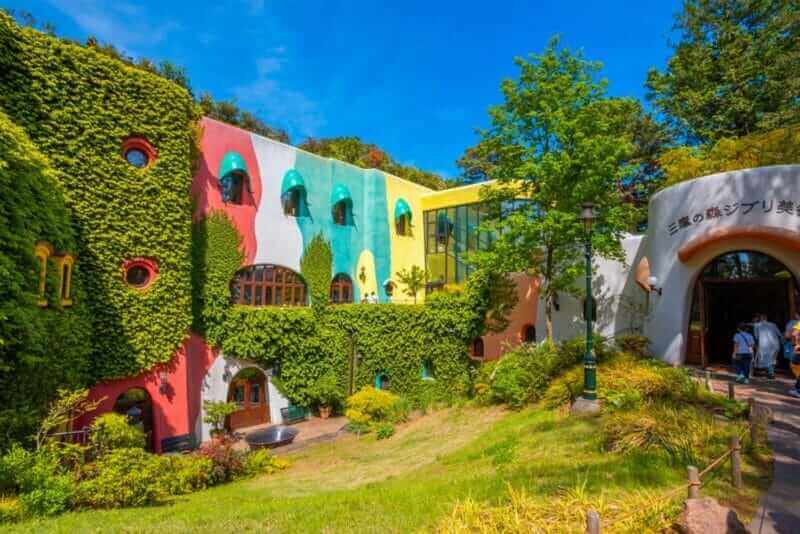
Ghibli Museum Mitaka is a museum that introduces the world of Japanese animation studio “Studio Ghibli”.
Studio Ghibli is world famous for its animation works such as “My Neighbor Totoro” “The Secret World of Arrietty” “Whisper of the Heart” “Castle in the Sky” “Princess Mononoke” “Howl’s Moving Castle”.
At Ghibli Museum Mitaka you can learn about the process in which these pieces were made. In this museum, you can also meet many characters that appeared in these works. For example, when entering this museum, the big doll of Totoro who appeared in “My Neighbor Totoro” welcomes you. In the hall, children can enter Catbus which appeared in “My Neighbor Totoro”.
This museum is located in Mitaka city in the western part of Tokyo. It takes about 15 minutes on foot from JR Mitaka Station and about 6 minutes by bus.
In order to enter the Ghibli Museum Mitaka, you need to make a reservation in advance. This museum is very popular, so there is a risk that you can not make a reservation just before. So, I recommend you book through the internet before you leave for Japan.
For more information and to see the tour program, click here!
>>Ghibli Museum Mitakaofficial website
Shinyokohama Ramen Museum (Kanagawa Prefecture)

Shinyokohama Ramen Museum is a unique museum where ramen shops representative of Japan gathered. If you go to this museum, you can eat famous ramen throughout Japan at the same time. Most of the shops in this museum will also provide a small amount of ramen, so perhaps you can enjoy several kinds of noodles.
Shinyokohama Ramen Museum is located a 5-minute walk from JR Shinkansen Shin-Yokohama Station in Yokohama City, Kanagawa Prefecture, south of Tokyo.
When entering the museum through the entrance on the ground floor, you are guided to the basement floor. As you can see in the picture above, 1958 Japan was reproduced, when Nissin Food ‘s Chicken Ramen (Instant noodle) was released. There are about 10 delicious ramen shops there. The retro shops at the time are also lined up on the basement floor, so please enjoy the strolls as well.
The ramen shops in Shinyokohama Ramen Museum are gradually replaced. No matter how famous the ramen shop, in this museum, if neglecting even a little effort, the reputation will be bad and they will be forced to leave the museum. I have been to the museum several times to cover the interview. I heard that the staff of the museum always travels nationwide in search of tasty ramen. To their passion, I admire.
In Japan, like this museum, there are an increasing number of food theme parks gathering popular noodle shops. For example, there are those in Tokyo station North exit, Kyoto station building, building in front of Sapporo station etc. When you travel in Japan, please check out such food theme park.
For more information and to see the tour program, click here!
>> Shinyokohama Ramen Museum official website
Hakone Open-Air Museum (Kanagawa Prefecture)
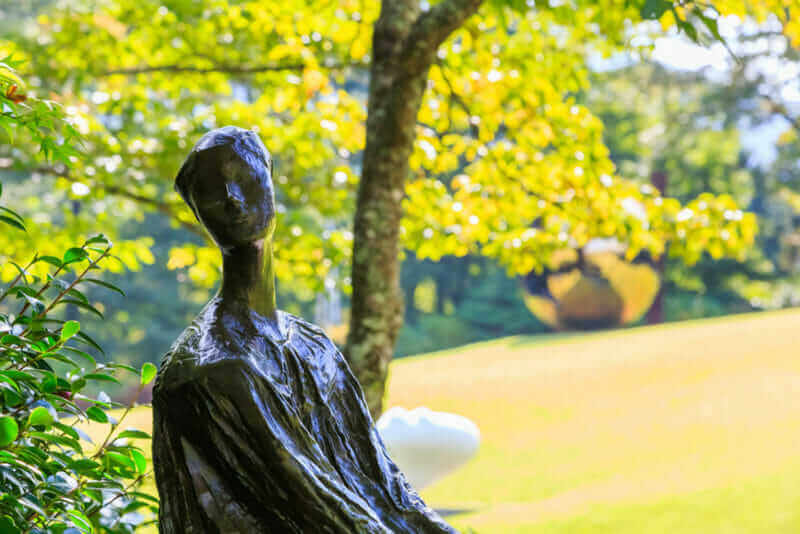
The Hakone Open-Air Museum (Hakone Chokoku-no-Mori Museum) is located in Hakone which is a mountainous area 100 km southwest of Tokyo. Hakone is a representative spa resort in Japan.
There are many sculptures such as Henry Moore and Rodin in the site of approximately 70,000 square meters of this museum. Many sculptures are on display in the open air, so you can enjoy sculptures while watching the beautiful mountains of Hakone. There is also the “Picasso Pavilion” which gathers Picasso’s paintings and the like on the premises.
The satisfaction level of the people who visited Hakone Open-Air Museum is quite high. There are enough real art works here.
In addition, children can also enjoy at this museum. At the outdoor plaza of this museum there are three-dimensional artworks in which children can enter and play. My children were delighted when we went to this museum.
In addition, Hakone Open-Air Museum has facilities of “Ashi-yu”. Ashi-yu is a hot spring facility where you can warm your feet (ashi). Why do not you soak your feet in hot springs and look at the beautiful mountains?
For more information and to see the tour program, click here!
>> Hakone Open-Air Museume official website
Toyota Commemorative Museum of Industry and Technology (Aichi Prefecture)
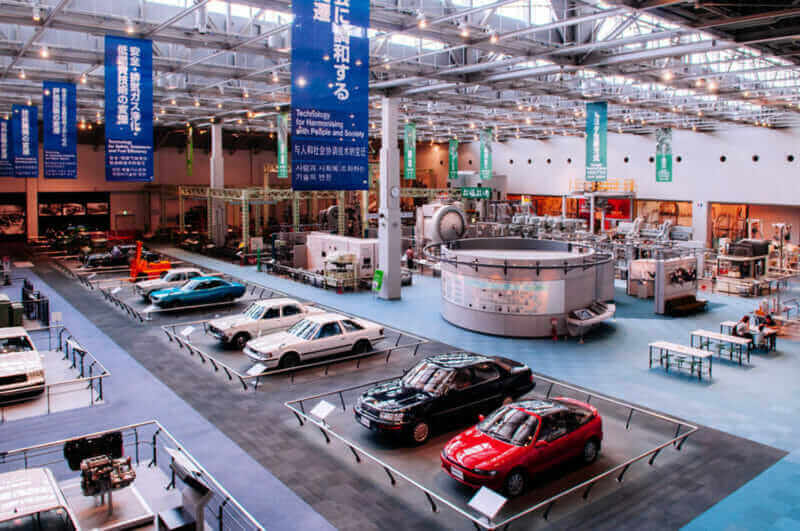
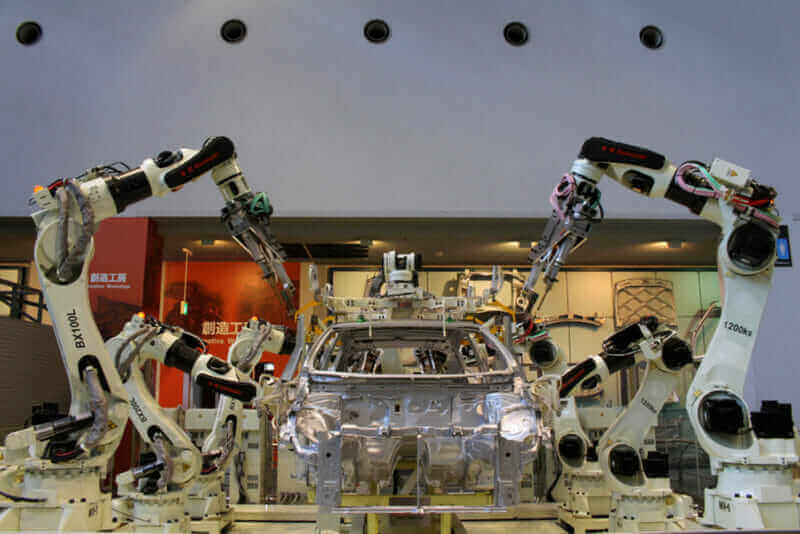
If you would like to learn about Japanese industry, there is no museum as perfect as Toyota Commemorative Museum of Industry and Technology. The satisfaction level of foreign tourists who went to this museum is very high.
Toyota Commemorative Museum of Industry and Technology is a museum operated by the Toyota Group located in Nagoya city, Aichi Prefecture, central Honshu. This museum has a total floor space of about 27,000 square meters. Many spinning machines, automobiles, robots, etc. developed by Toyota have been exhibited so far.
In this museum, you will know that Toyota has expanded its scale in the production of spinning machines before beginning production of cars. At the car’s exhibition hall, you may be overwhelmed by so many cars, from scarce classic cars to future cars.
Commentary and exhibits on the history of automobile development and the outline of automobile production are also substantial. It takes a whole day to see all the exhibits of this museum.
For more information and to see the tour program, click here!
>> Toyota Commemorative Museum of Industry and Technology official website
21st Century Museum of Contemporary Art, Kanazawa (Ishikawa Prefecture)
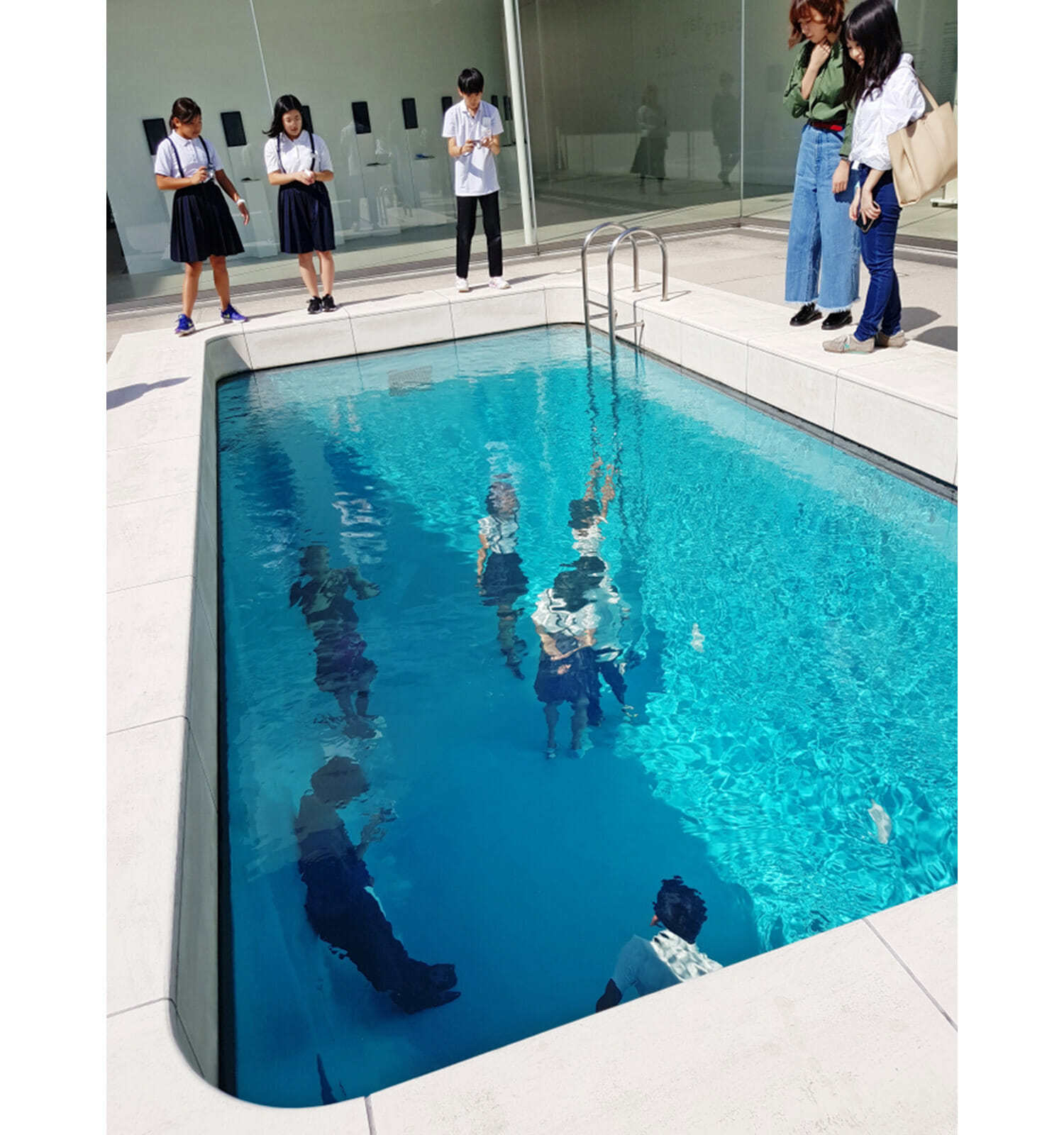
21st Century Museum of Contemporary Art, Kanazawa is a contemporary art museum in the center of Kanazawa City, a beautiful traditional city on the Japan Sea side in central Honshu. This museum is now one of the most energetic art museums in Japan.
The building of this museum is a very open structure with total glass. A lot of unique contemporary art is arranged in the building. For example, you see a “pool” as seen in the picture above. There are several people in the pool and looking up at you. If you go to the basement of the building, this time you will look up at the people above you from your room where thick glass is hung on the ceiling.
At this museum, special exhibitions with innovative ideas are held one after another. There are also many interesting projects such as events where ordinary citizens can participate in art work production. I also participated in an event organized by a famous artist at this museum. At that time, the fun look of the people who participated in the art production remained in the impression. If you like art, I recommend you go to this museum. You should be able to create pleasant memories.
For more information and to see the tour program, click here!
>> 21st Century Museum of Contemporary Art, Kanazawa official website
Ohara Museum of Art (Okayama Prefecture)
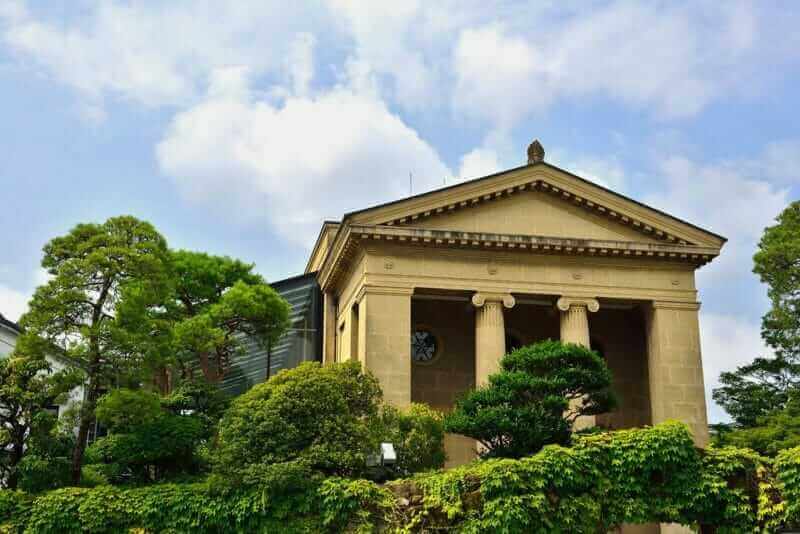
Ohara Museum of Art is one of the most highly respected museums in Japan. Ohara Museum of Art is the first private Western art museum in Japan that was established in 1930. This museum has actively purchased western paintings and sculptures such as El Greco, Gauguin, Monet, Matisse, Rodin, etc. from the time when there were few famous Western art pieces in Japan, and opened it to the public. There are many cultural people who grew up watching the exhibits of this museum. This museum has made a big contribution to the education of young people in terms of art culture.
The Ohara Museum of Art is located in Kurashiki City, Okayama Prefecture, western Honshu. Kurashiki is famous for its beautiful historical cityscape, and many tourists visit. Ohara Museum of Art is in the center of this historical cityscape.
Masterpieces such as Rodin, Renoir and Monet are displayed in the main building of this museum. In the annexes where the warehouse of the Edo period was refurbished, there are Japanese printmakers and antique art in Asia. In the pond of this museum, water lilies bloom from spring to summer. This water lily is split from Monet’s Japanese garden in Giverny, France.
The founder of this museum was Magosaburo OHARA (1880-1943), a leading Japanese businessman in the first half of the 20th century. He sent a Western painter Torajiro KOJIMA (1881 – 1929) to Europe many times and asked Torajiro to select art works. Strategies that business people and art experts improve the museum together are still being followed. The director and curators of this museum are professionals representing Japan. They are being asked for cooperation from the descendants of Magosaburo and are leading the Japanese art world based on this museum. They have also studied works of young artists well and are supporting young people.
I went to so many museums for the purpose of coverage so far. Among them, I was most impressed by the people of Ohara Museum of Art. I think that if you go to this museum, you will be impressed not only by the works but also by the stories of those who protect the art world.
For more information and to see the tour program, click here!
>> Ohara Museum of Art official website
Adachi Museum of Art (Shimane Prefecture)
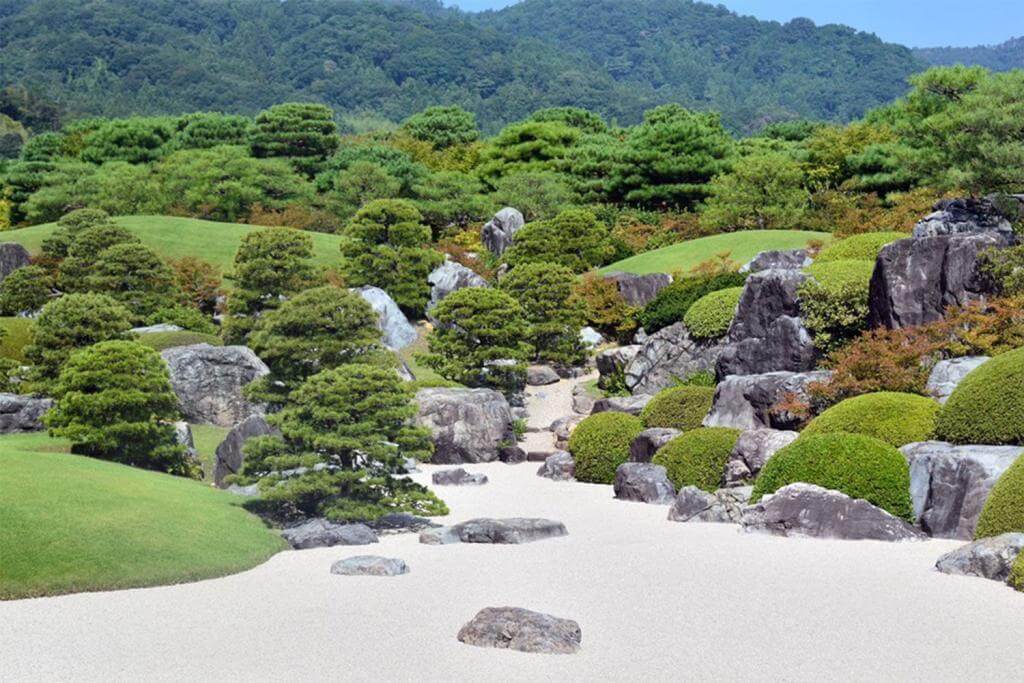
Adachi Museum of Art is famous for its garden recently. The garden has been evaluated as the most wonderful Japanese garden in Japan by American magazines, and more people visit to see this garden. Since I am covering this museum many times, I know that this garden is amazing. I introduced the garden of Adachi Museum of Art in the following article, so if you are interested please also read the following article. However, Adachi Museum of Art is actually a painting art museum. This museum has a collection of very wonderful Japanese paintings. If you go to the Adachi Art Museum, please see not only the outdoor gardens but also indoor Japanese paintings.
For the Japanese garden of Adachi Museum of Art please refer to the following article.
The most famous of the Japanese paintings held by Adachi Museum of Art is the work of Taikan YOKOYAMA (1868-1958). For example, “Selflessness”, “Autumn Leaves”, “Mountain after a Shower” etc. Taikan is a Japanese painter representing modern Japan. He painted a picture of Mount Fuji well. Looking at his picture of Mt. Fuji, you may be able to imagine the spirituality the Japanese feels on this mountain.
Other artists such as Seiho TAKEUCHI, Shoen UEMURA, Gyokudo KAWAI etc. are also in this museum. Pottery works such as Rosanjin KITAOJI and Kanjiro KAWAI are also wonderful. If you go to the Adachi Art Museum, you can enjoy the world of Japanese painting.
For more information and to see the tour program, click here!
>> Adachi Museum of Art official website
Hiroshima Peace Memorial Museum (Hiroshima Prefecture)
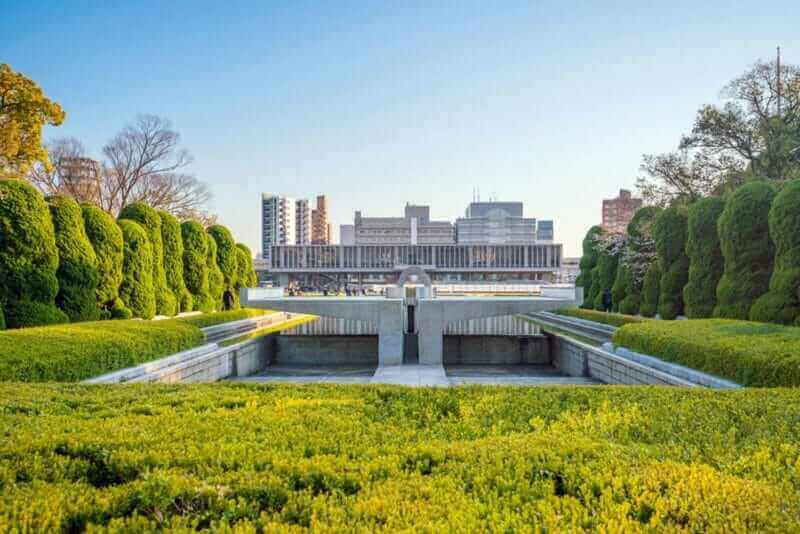
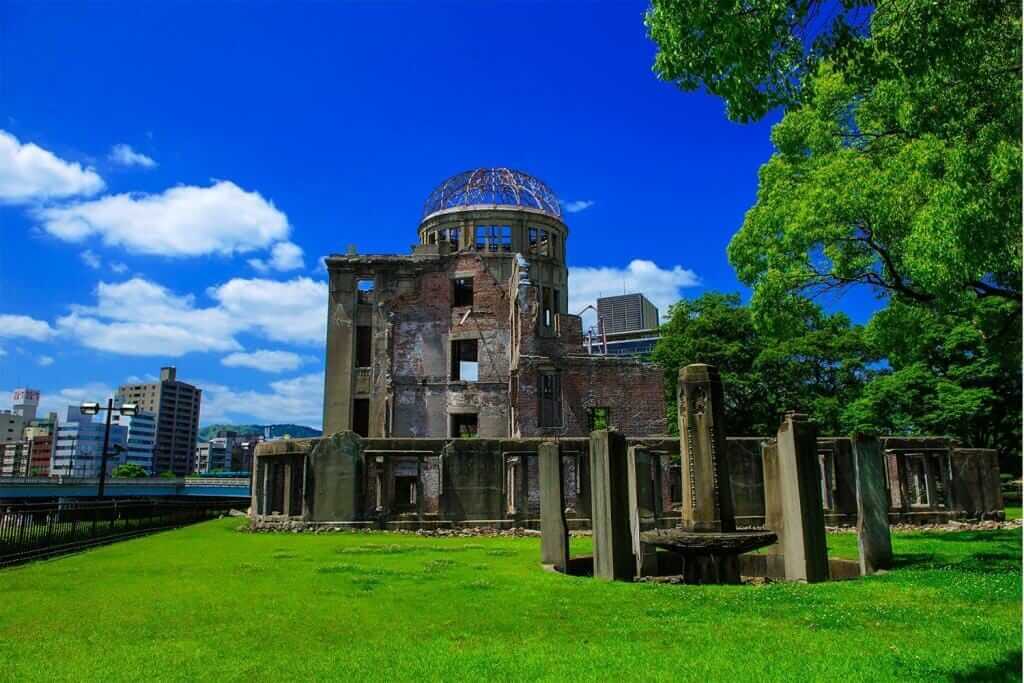
Hiroshima Peace Memorial Museum is a museum located in Hiroshima Peace Memorial Park in Hiroshima City, Hiroshima Prefecture. This museum was founded to transfer the memories of the tragedy caused by atomic bombs dropped on August 6, 1945 to future generations.
In this museum, the lives of Hiroshima citizens before the atomic bomb was dropped are introduced. And what kind of tragedy happened in Hiroshima when the atomic bomb was dropped is explained through the exhibition of enormous relics.
Hiroshima Peace Memorial Museum is quite different from other museums. People who visited this museum are keenly afraid of the fear of the atomic bomb and are very shocked. And they realize how important is peace.
This museum is highly valued as one of the top tourist attractions to see among foreign tourists visiting Japan. Near the museum there is also the skeletal domed building which still stands to commemorate the dropping of the atom bomb. Why do not you think about peace at the hypocenter where the atomic bomb was dropped?
For more information and to see the tour program, click here!
>> Hiroshima Peace Memorial Museum official website
Benesse Art Site Naoshima (Kagawa and Okayama Prefecture)
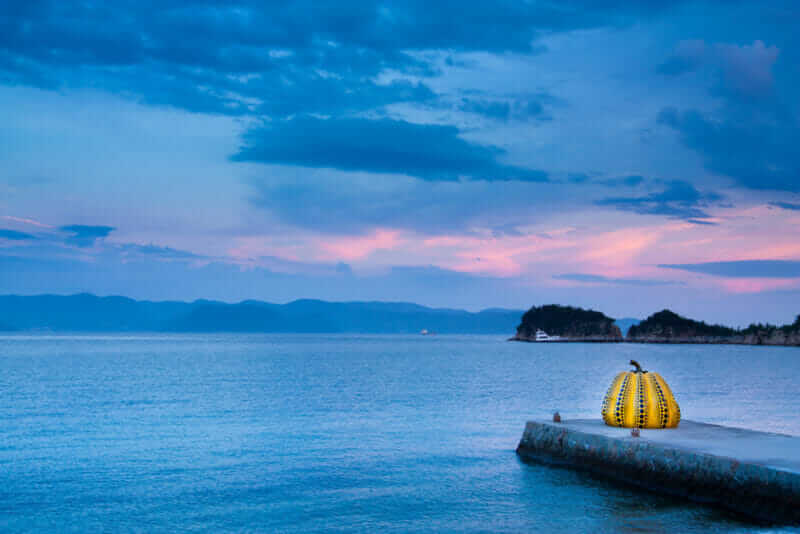

“Benesse Art Site Naoshima” is the collective name for all art-related activities on the islands of Naoshima and Teshima in Kagawa Prefecture and on Inujima island in Okayama Prefecture. These activities are managed or supported by Benesse Holdings, Inc. and Fukutake Foundation. Benesse is a Japanese company related to education and publishing based in Okayama-shi.
It is difficult to be honest to explain these art activities in an easy-to-understand manner. These art activities evolve steadily and diversely on the beautiful islands of the Seto Inland Sea. If you go to these islands, you will realize that this area is now the most creative space in Japan. Naoshima, Toshima and Inujima are getting more and more popular among foreign tourists coming from abroad.
This art activity has about 30 years of history. Currently, there are museums in this area such as Chichu Art Museum, Benesse House Museum, Lee Ufan Museum, ANDO MUSEUM, Teshima Art Museum. And there are many art facilities and art works in the village of the islands and around the field. They create a mysterious harmony with the old village and the beautiful view of the Seto Inland Sea.
There are lots of inns on these islands. However, I recommend you to stay at Benesse House Museum. This museum also owns hotels. Staying at this beautiful hotel, you can stay surrounded by art.
Advance reservation is required for Chichu Art Museum. For more information on Benesse Art Site Naoshima, including booking accommodation at Benesse House Museum and booking for Chichu Art Museum, please see the official website below.
Click to check tour programs, etc!
In this area, a festival of contemporary art called “Setouchi Triennale” is held once every three years. During this festival, it is crowded with so many tourists.
>> Setouchi Triennale official website
Otsuka Museum of Art (Tokushima Prefecture)

Otsuka Museum of Art is a huge museum with a floor area of 20,412 square meters in Naruto city, Tokushima Prefecture, Shikoku. This museum has a huge amount of full-size ceramic reproductions of major works of art.
More than 1000 Western paintings held by 190 art museums in 25 countries worldwide are duplicated and displayed in the same size as the original. If you go to this museum, you will find the world famous Western art. For example, you can appreciate the masterpieces of painters such as Leonardo da Vinci, Rembrandt, Velazquez, Goya, Millet, Renoir, Gogh, Cezanne, Gaughin, Picasso. You can also see famous paintings such as the Sistine Chapel, Scrovegni Chapel.
Otsuka Museum of Art was founded in 1998 by Otsuka Pharmaceutical Co., Ltd., a major Japanese pharmaceutical company, using its own replication technology. The duplicate picture of this museum does not degrade color more than 2000 years. Therefore, it can be said that it is a valuable art museum to leave a record of masterpieces in future generations.
When I went to Otsuka Museum of Art for the first time, I was surprised anyway. There are many masterpieces of the world at their full size here. Even though I know they are duplicates, I was overwhelmed by their power.
Otsuka Museum of Art is very huge and you have to walk about 4 km in total to see all the pictures. So, if possible, try to take a day at least. It might be a good idea to select the masterpieces you want to see in advance.
For more information and to see the tour program, click here!
>> Otsuka Museum of Art official website
Nagasaki Atomic Bomb Museum (Nagasaki Prefecture)
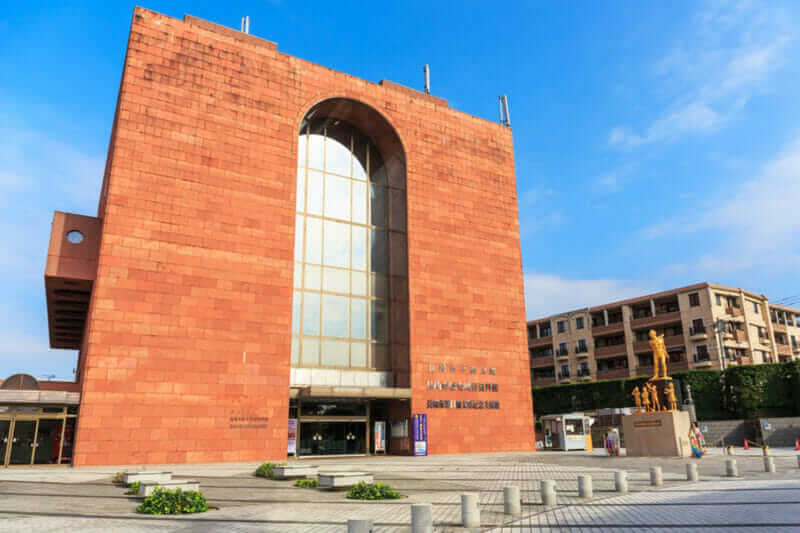
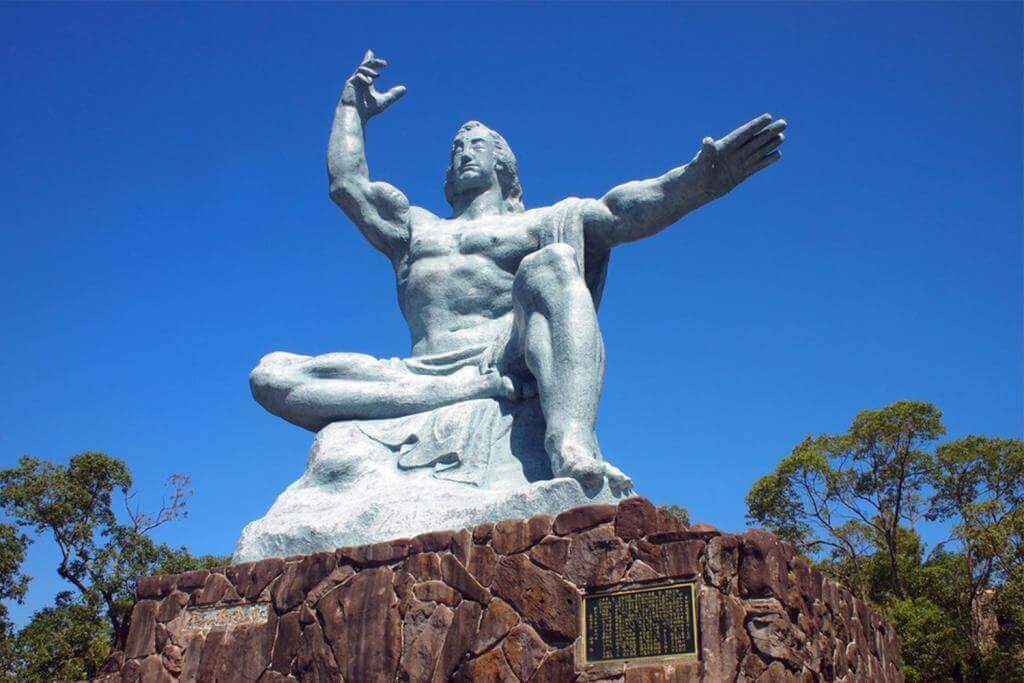
Nagasaki Atomic Bomb Museum is located 2 km west of JR Nagasaki Station in Nagasaki City, Nagasaki prefecture, in the western part of Kyushu. This museum was founded to record the devastation caused by atomic bombs dropped in Nagasaki City on August 9, 1945. Along with the Hiroshima Peace Memorial Museum in Hiroshima City, it is regarded as a special museum in Japan. Like the Hiroshima Peace Memorial Museum, there are also many visitors from abroad in the Nagasaki Atomic Bomb Museum.
Various relics in Nagasaki city destroyed by atomic bombing are displayed in this museum along with many photographs. For example, there are timepieces pointing at 11:02 when the atomic bomb fell, and steel bends that were severely bent. There is also a model of atomic bomb dropped in Nagasaki. You can also view various material images on nuclear weapons with English subtitles.
Near the Nagasaki Atomic Bomb Museum, there is also a Peace statue on the theme of the desire for peace as seen in the photo above. If you stand in front of this statue, you will be made to think about peace seriously.
For more information and to see the tour program, click here!
>> Nagasaki Atomic Bomb Museum official website
Thank you for reading to the end.
We have written an article on how to arrange tickets wisely. Please refer to it.
Now, let’s plan to make your vacation in Japan the best experience ever!
